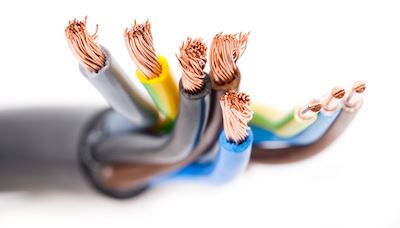What’s one of the most dangerous systems in your home? Most people would guess the electrical system – it’s just common sense that tells you to stay away from it unless you know what you’re doing.
If you’ve ever felt a little jolt plugging something in, you understand the dangers. We’ve all experienced a breaker tripping, telling us something is wrong with the flow of electricity. 
Fixing a leaking faucet? We may attempt it as a DIY project. But most of us know fixing a troubled outlet just isn’t something the average DIYer should do.
Still, arming yourself with a little electrical knowledge may help you as you perform your honey-do chores. While you should always leave electrical projects to the professionals, here are a few tips to help you decipher the wiring color codes.
Electrical wiring comes in one of several colors:
Black Wires – when you see a black wire, always assume it’s live. It’s used to transfer electricity from the power supply to your switches and outlets.
Red Wires – always assume they are live. You’ll find red wires present in 220-volt circuits. While red is secondary to black, it’s often used in appliances like smoke detectors.
Yellow Wires – always assume they are live if you have power. A yellow wire is used as a live wire pulled through a conduit. You’ll find yellow wires used in fixtures like lighting and ceiling fans.
Blue Wires – always assume they are live if you have power. Blue wires are also fed through a conduit, usually bringing power to three or four-way switches.
Green Wires – green wires are grounding wires. They aren’t usually live, though they can be if there is a fault in the system.
White and Grey Wires – these are neutral wires. They should never be attached to other colors. They may be live if there is a problem with the load.
Have a question about the electrical in your home?

